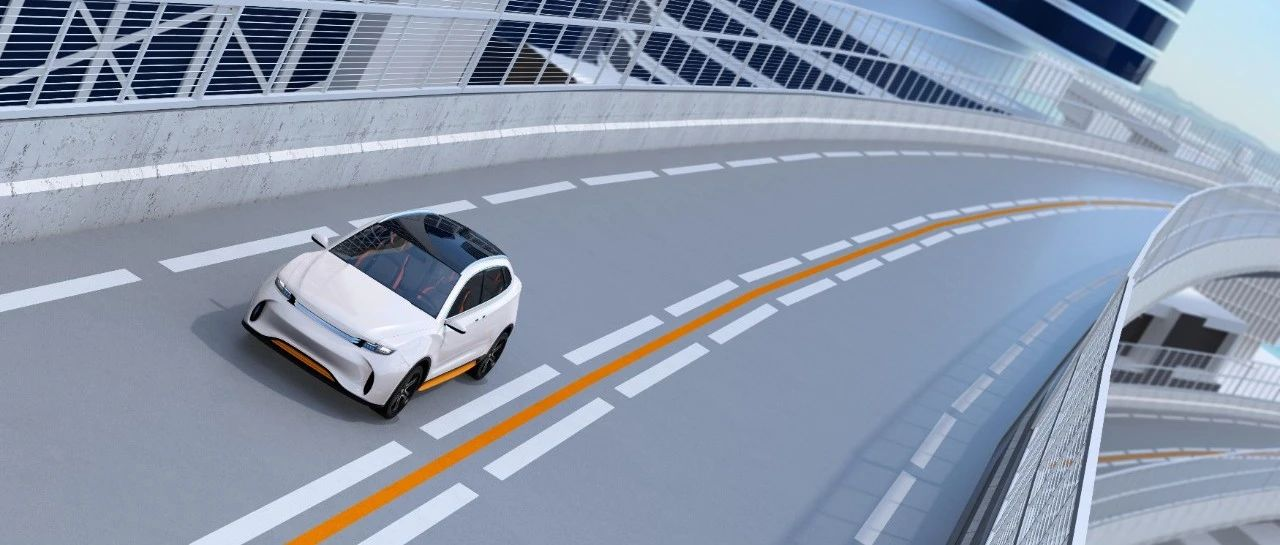Author: Tian Xi
From 2022, the trend of “downward” popularization of advanced intelligent driving has been rising, such as adaptive cruise control, lane keeping, turn signal-triggered lane changing, and autonomous parking, which were exclusive features of high-end models like Tesla and NIO, now becoming increasingly common in some low-end models.
The most representative example is the KiWi EV, the DJI edition of SAIC-GM-Wuling’s 2023 model, which was released in September last year. Despite being priced at only 100,000 yuan, this car has almost all L2+ capabilities, including ACC, LCC, and APA.
Similarly, the third-generation Roewe RX5 and the all-new Borui L both cost less than 200,000 yuan, yet are equipped with advanced assisted driving functions such as NGP and NOA surpassing those of vehicles in the same price range.
Behind such “high performance, low cost” lies the similar system architecture of these cars – the integration of driving and parking.
The integration of driving and parking: a necessary path for popularizing intelligent driving
The integration of driving and parking is arguably the hottest topic today.
To understand this concept, let’s start with its “predecessor” – the separation of driving and parking.
During the era when traditional distributed electronic and electrical architecture was based on a single-chip microcomputer, one controller (ECU) was responsible for one function. For example, one controller was responsible for driving assistance, and another controller was responsible for parking assistance.
When the driving function was activated, only the chips and sensors related to driving, such as the forward-looking camera and millimeter-wave radar, could be called upon. Similarly, when parking was executed, only the chips and sensors related to parking, such as fish-eye cameras and ultrasonic radar, could be activated. The computing power and sensor resources between controllers were isolated from each other and could not be shared.As cars shift towards electrification, intelligence, networking, and sharing, the number of ECUs keeps increasing, and the distributed electronic and electrical architecture is becoming increasingly difficult to meet the needs of developing intelligent vehicles. Thus, it is gradually moving towards domain-centralized development, which brings about opportunities for combining driving and parking.
The so-called integrated driving and parking is to integrate the original independent driving and parking controllers into a domain controller.
In concept, integrated driving and parking is not complicated. What is important is the actual impact it has on car companies, which is no less than opening a Pandora’s box.
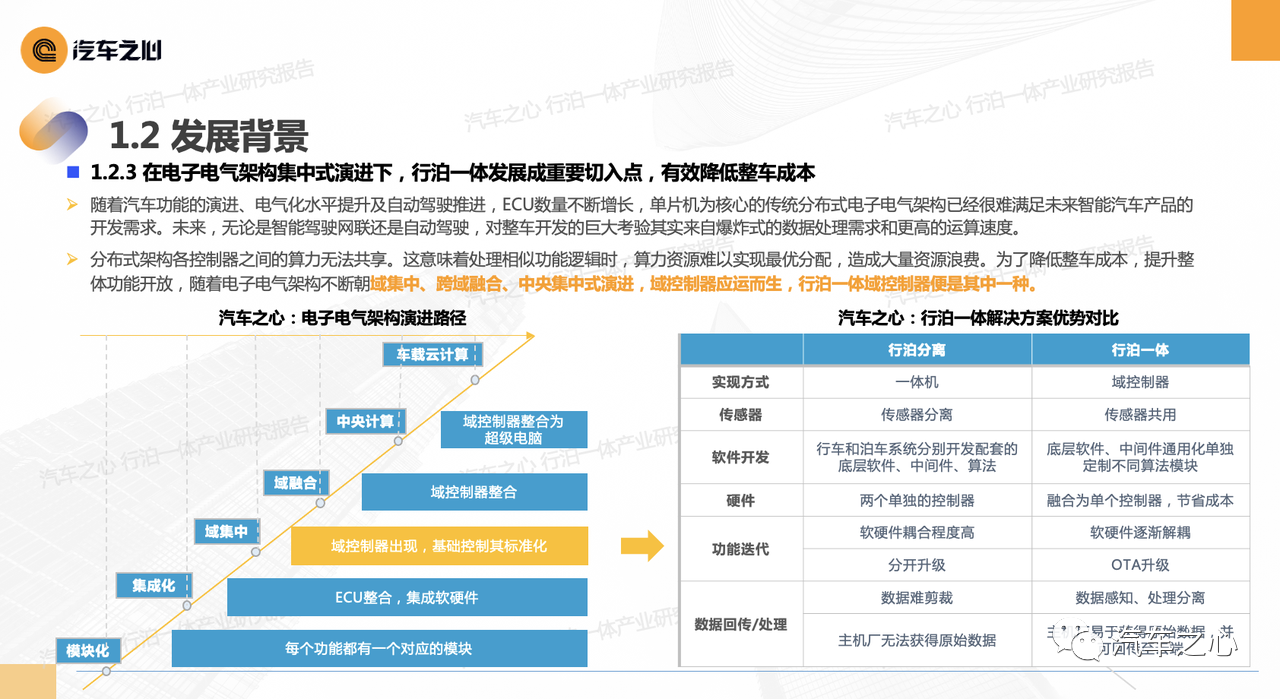
Firstly, hardware costs are cut in half, as integrated driving and parking eliminates the need for a separate set of controllers.
Secondly, software development costs are greatly reduced. In the past, the driving and parking functions were developed separately by different departments and suppliers. With integrated driving and parking, one department can connect and complete the development with one supplier. As a result, car companies need to invest less in communication and management costs during the development process.
In addition, integrated driving and parking can also simplify the I/O interface of the domain controller, reduce the wiring length, and lower the overall production cost.
For car companies, greatly reduced costs mean that intelligent driving systems can cover mainstream consumer vehicles in the 100-200K RMB range, allowing more people to have access to this capability.
Xie Kandi, Director of Public Relations at DJI Automotive, once said that one of the reasons why KiWi EV can successfully achieve both “performance” and “cost-effectiveness” is that it adopts an integrated system design of integrated driving and parking.
The third-generation Roewe RX5 and Borui also rely on Horizon Journey 3 chips to create their unique integrated driving and parking solutions.
The former directly brings NGP, an advanced driver assistance system, to the fuel SUV market with a price of 150,000 yuan, while the latter provides users with a variety of advanced intelligent driving functions for a similar price.
It should be noted that integrated driving and parking not only enables car companies to achieve “cost reduction”, but also enhances users’ intelligent driving experience by “increasing efficiency”.
For example, driving scenes can call on the fisheye camera frequently used for parking functions to optimize the performance of close-range situations such as congestion following and cut-in, while parking scenes can call on the front camera to realize long-range perception and increase driving speed, providing users with a seamless intelligent driving experience across multiple scenes.“`
From this perspective, the integration of driving and parking is also a necessary road for ADAS to advance towards higher level autonomous driving in the future.
In addition, by adopting domain-based architecture, the integration of driving and parking enables smart cars to stay up-to-date, and its software and hardware can be fully integrated, making the operation and management of the entire integrated system more stable and efficient, and the data loop advantageously closed. A single OTA upgrade can update both driving and parking functions, truly achieving software-defined cars.
Joint Efforts from Software and Hardware, Chip, Algorithm and Domain Controller Players Show their Strengths
There are many advantages to the integration of driving and parking, but realizing it is not easy and requires cooperation from different suppliers such as chip manufacturers, algorithm companies, and domain controllers.
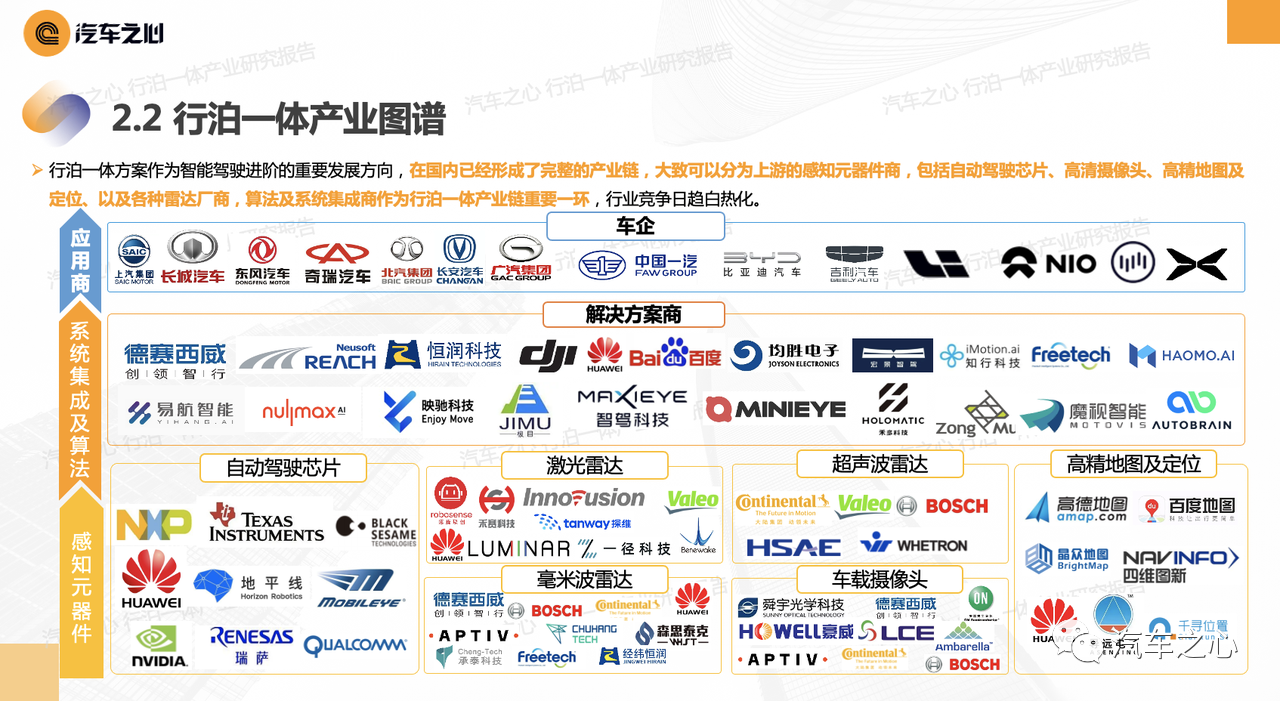
First of all, the architecture of the chip is related to the sensor’s depth reuse and computing resource sharing that the integration of driving and parking aims to achieve.
Generally speaking, SoC chips designed for driving and parking integration need to integrate ISP, GPU, MCU, CPU, DSP, and other processor units simultaneously.
For example, in the driving scene, CPU and DSP with sufficient computing power are required for the fusion of camera and millimeter-wave radar data and map positioning, while in the parking scene, GPU must be used for rendering and image stitching of 3D panoramic view.
Chip companies that are currently involved in the integration of driving and parking include NVIDIA, Horizon Robotics, Black Sesame Technologies, TI, and more.
For instance, Horizon Robotics can provide two mass-produced chip platforms, “Journey 3” and “Journey 5”, for the mainstream cost-effective domain control (5V-6V) and high-performance domain control (10V-12V) solutions of passenger car driving and parking integration.
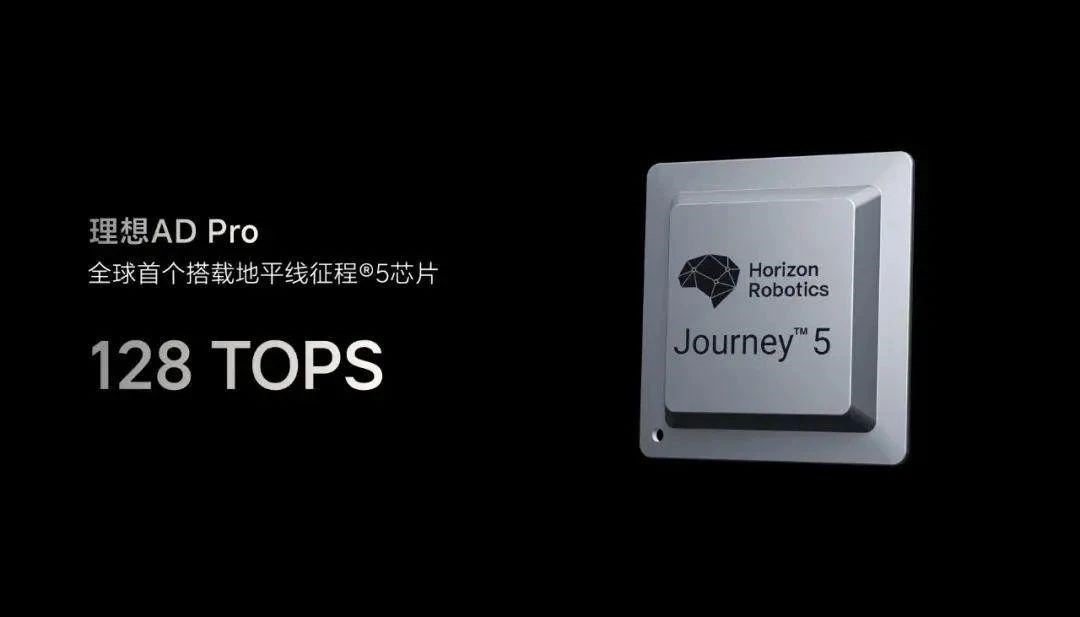
Journey 3 chip can provide a 5TOPS computing power as a single-chip with a typical power consumption of only 2.5 watts, and it can also support passive heat dissipation, which is widely used by many Tier 1 companies to create driving and parking integration solutions for economic car models that cost between RMB 100,000 and 250,000.
# Journey 5 single chip has a computing power of up to 128TOPS, specializing in high-level intelligent driving, targeting new energy vehicle models with **medium to high-end** positioning, and deploying a high-performance integrated parking solution.
_20230308211856.png)
Sesame also joins the integrated parking trend. In 2022, it launched the **Drive Sensing Solution** based on the Huashan II A1000 chip (58TOPS), supporting numerous functions such as L2++ driving navigation NOA, parking HPA/AVP, 3D 360 panoramic view, multi-road DVR. It can integrate driving and parking into one system, **reduce costs**, **reduce weight**, and **improve performance**.
In addition, Sesame plans to release the A2000 chip in 2023, which can provide more powerful comprehensive processing capabilities while meeting the high computing power demand of the entire vehicle industry, and can greatly reduce costs.
As previously mentioned, it is precisely because of the emergence of domain controllers that integrated parking becomes possible.
Therefore, domain controller manufacturers are also important participants in the integrated parking trend. Players in this field include Desay SV, DJI, Huawei, Baidu, Yihang Intelligence, Zhixing Technology, Forerunner Technology, Neusoft Reach, Hongjing IMa, Hedu Technology, Youjia Innovation, and JWHR, etc.
Take Hongjing IMa as an example. Its **HyerPilot2.5 Integrated Parking Solution** uses 5R10V12Uss external sensors that are compatible with various mainstream radars.
It supports 2*2M/8M forward vision, 4*1M/2M panoramic input, and meets the needs of **high-speed navigation NOP** and **vision-based automatic parking control fusion** with limited computing power.
Dongsoft Reach has also launched an L2+ and above integrated parking domain controller, cross-domain centralized computing unit, and other autonomous driving products based on an open SOA architecture.
In addition, by pre-setting NeuSAR basic software and standard middleware, I/O interfaces, etc., Dongsoft Reach's autonomous driving business can support L0-L4 full-range products to develop applications in a software architecture and continue to build a cooperative and win-win ecosystem with international leading chip manufacturers and China's independent chip manufacturers.Based on Horizon Journey series chips and Texas Instruments TDA4 series chips, Welday Technology has successfully developed HoloArk, a domain controller with parking and driving functions. HoloArk comes in three different versions - HoloArk 1.0, HoloArk 2.0, and HoloArk 3.0 - with different computing capabilities, ranging from 18 TOPS to 500+ TOPS, meeting the performance requirements of high-level L2+ to L4 autonomous driving systems.
From chips to domain controllers, the success of parking and driving integration on vehicles' mass production depends not only on hardware but also on the algorithm's performance.
Now, both L2+ and L4 companies are striving for parking and driving integration.
Nullmax is one of them. Its MaxDrive parking and driving integration solution supports various algorithm platforms and characterized by sensor depth reuse and chip resource sharing, providing top-level experience and extremely high cost-effectiveness. Notably, based on its full-stack development ability and top-level visual perception, Nullmax can implement autonomous driving functions for all scenarios with just one SoC and a set of sensors.
Xiaoma Zhixing is also building a parking and driving integration solution.
In January 2023, Xiaoma Zhixing announced strategic cooperation with Horizon based on its self-developed parking and driving integration smart driving algorithm to create cost-effective mass-produced intelligent driving solutions with high performance.
Xiaoma Zhixing has also entered the domain controller market. It released the industry's first batch of domain controllers with different configurations using the DRIVE Orin chip in 2022, including single Orin chip and dual Orin chip, and its self-developed domain controller, "Fangzai," has begun mass production and delivery.
Similarly, Baidu Apollo has also entered the parking and driving integration market. Its ANP 2.0 product solution is the first L2+ level assisted driving product created by applying L4 autonomous driving technology to reduce dimensions, focusing on high-speed roads, urban ring roads, parking lots, and other scenarios. It is rumored that Yuanrongsunhang also has some deployment in parking and driving integration.According to the latest report on the "integrated parking and driving industry" by Autohome, at least 20 companies have launched intelligent driving solutions that support integrated parking and driving.
## 2023, the outbreak of mass production of integrated parking and driving
With the influx of various players, integrated parking and driving has officially entered the period of mass production.
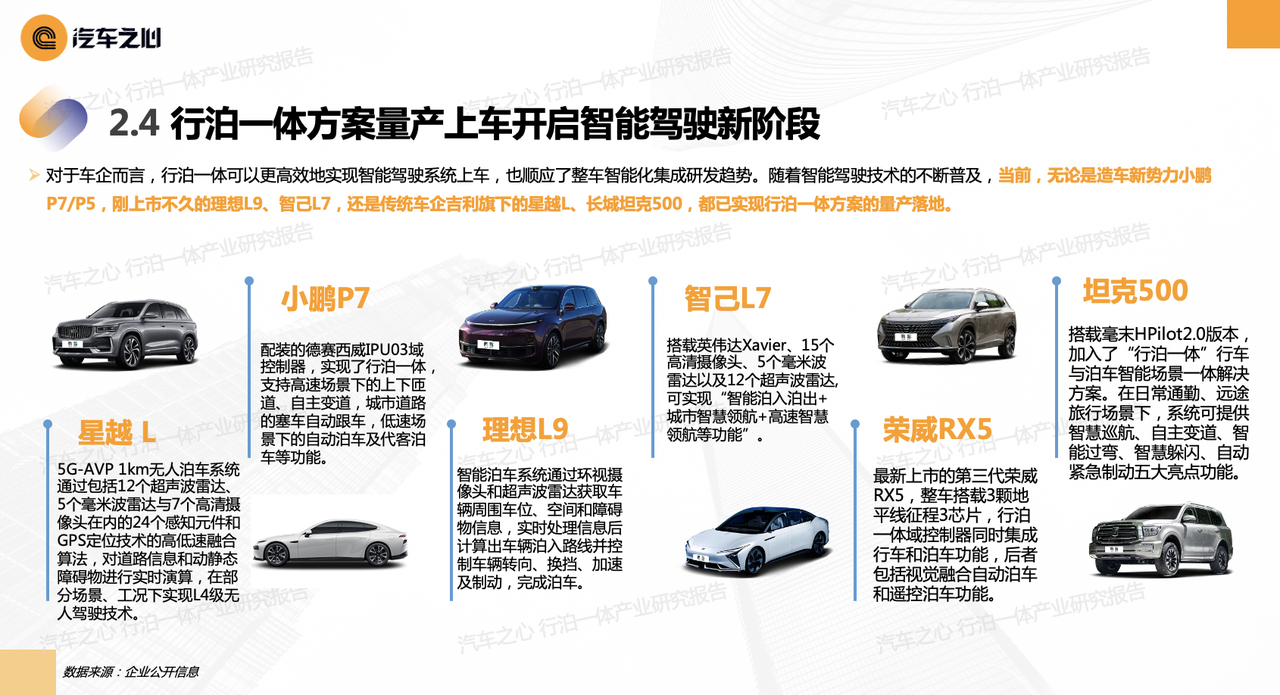
The third-generation Roewe RX5 mentioned earlier and the all-new BYD Tang were born under this background. In the third-generation Roewe RX5, Hongjing Intelligent Driving provided the integrated parking and driving domain controller. The platform is based on three Horizon Journey 3 chips, with a total computing power of 15 TOPS.

Through computing power reuse and time-sharing switching, the third-generation Roewe RX5 realizes intelligent driving under both driving scenarios (NGP) and parking scenarios (full-scenario worry-free automatic parking). This not only improves the utilization efficiency of computing power, simplifies the vehicle network topology, but also greatly reduces the difficulty of vehicle deployment, becoming a double-ultimate choice of performance and cost balance.
It is worth mentioning that the third-generation Roewe RX5 has also become the industry's first fuel vehicle model equipped with NGP technology.
The all-new BYD Tang is equipped with the first integrated parking and driving domain controller product, "ADC20", created by Foraytech based on its ODIN digital base. The latter also relies on the Horizon Journey 3 chip and supports the access of six cameras, five millimeter-wave radars, and 12 ultrasonic radars.
Thanks to this, the all-new Borui L can achieve NOA advanced navigation-assisted driving from point A to point B on closed roads such as highways and city expressways covered by high-precision maps. It can complete driving tasks such as intelligent ramp driving, intelligent lane-changing overtaking, and intelligent road interchange at a high level. Furthermore, it can unlock up to 26 active safety assist functions including large vehicle smart avoidance, emergency turning, and collision avoidance assistance in driving, parking, and emergency scenarios.
The 09 EM-P Long-range version of Lynk & Co, a high-end brand under Geely Automobile Group, has also been mass-produced with a high-level intelligent driving technology platform based on the Horizon Journey 3 chip, which realizes driving assistance functions such as high-speed NOA.
In addition to being mass-produced in entry-level models, the integrated parking and driving solution has also been widely deployed in mid-to-high-end models.
The Ideal L8 Pro, which will be launched in September 2022, is such a model. It is equipped with the AD Pro intelligent driving computing unit built by the Horizon Journey 5 chip, which can directly collect multi-channel camera and radar signals. It relies on efficient software algorithms to achieve all-round visual perception and fusion such as forward vision, rear vision, and panoramic vision. With multi-channel high-speed bus communication, it completes driving path planning and vehicle status control, achieving high-speed NOA navigation assist, automatic emergency braking, intelligent parking and summoning, and other rich driving, parking, and active safety functions.
In 2023, more integrated parking and driving solutions will be mass-produced:
(1) Nullmax Newnao, a powerful integrated driving and parking intelligent driving solution developed based on the NVIDIA Orin chip platform, is expected to launch its first vehicle in 2023.
(2) WeDoo Tech has obtained designated points from several leading automakers including Chery, among of which the HoloArk1.0 and HoloArk2.0 domain control solutions will be mass-produced and loaded in vehicles in 2023.
(3) Foraytech's ADC30 high-performance domain control supports the 12V5R3L sensor solution and leading BEV algorithm model, and is also expected to be mass-produced in 2023.
(4) **Macropus Intelligent Driving** is a system-level solution for parking and cruising based on a single chip. It is expected to achieve mass production and be put on the market in the second quarter of 2023.
(5) **Neusoft Reach** has developed a parking and cruising integrated domain controller product based on Journey 5, which is expected to be put into mass production in 2023;
(6) **Horizon Robotics** and **BYD** have reached a designated cooperation on Journey 5 chip parking and cruising integrated solution. The related models will be launched in the mid-to-high-end market as early as 2023.
(7) **Black Sesame Technologies** and **Jiangling Motors** have reached a strategic cooperation. Multiple production models of SIH brand will be equipped with Huashan 2 A1000 chip. Dongfeng Group will also use the Huashan 2 A1000 chip in its first pure electric sedan and first pure electric SUV under Dongfeng Passenger Vehicle.
(8) **Qingzhou Zhihang** will reach a mass production level with its self-developed parking and cruising integrated solution based on Horizon RPC's Journey 5 chip and jointly developed the intelligent adaptation. This offer will be available by 2023.
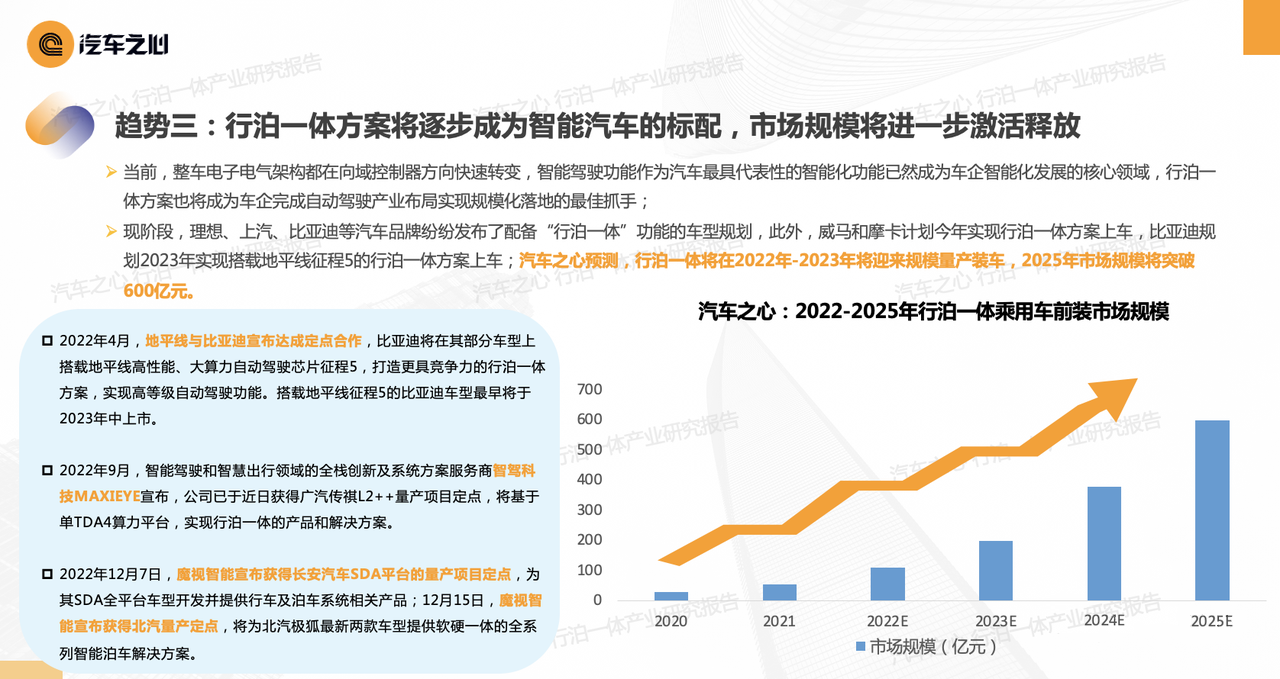
According to the **Integrated Parking and Cruising Industry Research Report**, the integrated parking and cruising solution has become the best tool for car manufacturers to complete the layout of the automatic driving industry and achieve large-scale landing. It has presented the tendency of standard configuration, and the rate of new car front-mounted standard configuration will enter a rapid rise channel beginning in 2023. It is expected to exceed 40% by 2025.
On the eve of the massive production, Automobile Heart hopes to launch a large-scale industry discussion on the integrated parking and cruising system, and to this end, we have launched the "Integrated Parking and Cruising: Sprinting for Large-Scale Front-Mounted Production" themed event. We invited senior experts in this field to share and discuss solutions, technologies, and engineering related to the mass production of integrated parking and cruising with Automobile Heart readers.
This period of "Experts Speak" is divided into six periods. The first four periods are enterprise personal sessions. We have invited Black Sesame Technologies, Xiaoma Zhixing, Yuanrong Qixing, and a mysterious guest to share the theme. The last two periods will be two roundtables. Horizon Robotics will invite special guests to discuss development trends in the integrated parking and cruising system, while Neusoft Reach will bring exclusive industry observations and analysis.```
<h2><strong>"Integrated Parking and Charging, Sprinting Towards Large-scale Mass Production"</strong> -- Experts Speak</h2>
<p>The Experts Speak section on this topic will begin on March 9th. </p>
<p>If you have any interesting topics to discuss, please leave a comment below. We will select the most interesting ones and invite industry experts to join the discussion. Stay tuned!</p>
This article is a translation by ChatGPT of a Chinese report from 42HOW. If you have any questions about it, please email bd@42how.com.
